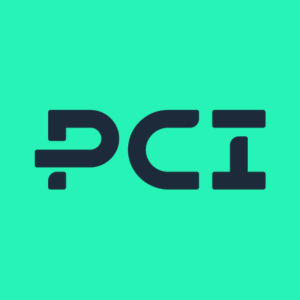Disclaimer: This blog post, which answers “How does SPP’s Affected System Study work, and why does it matter for interconnection?,” was generated using PCI’s ISO/RTO Documentation AI Chatbot, powered by ChatGPT. While the content is based on curated market documentation, it is intended for informational purposes only and may not reflect the most up-to-date or comprehensive information. We recommend verifying any key details directly with relevant sources before making business decisions.
For the latest answer to this question, generated live, visit our free ISO/RTO Documentation Chatbot.
When it comes to interconnecting new generation facilities to the grid, the process is far from simple. One critical step in this journey is the Affected System Study, especially in the Southwest Power Pool (SPP). This study plays a pivotal role in ensuring that new interconnection requests don’t disrupt the safety and reliability of the transmission system. But what exactly is an Affected System Study, and why does it matter so much for interconnection?
In this blog post, we’ll explore the purpose of SPP’s Affected System Study, how it identifies potential transmission impacts, and the ways it shapes project costs, timelines, and approvals. By the end, you’ll have a clear understanding of why this study is a cornerstone of the interconnection process and how it aligns with regulatory requirements.
ISO/RTO Documentation Chatbot
Use our AI to search Business Practice Manuals from ISO/RTO markets at no cost.
What is an affected system study?
An Affected System Study is an engineering analysis conducted to evaluate how a new interconnection request might impact neighboring transmission systems. In SPP’s case, this study is essential for identifying potential constraints or reliability issues that could arise when a new generating facility connects to the grid. The study doesn’t just look at the immediate transmission system where the project is located; it also examines the ripple effects on adjacent systems, known as “affected systems.”
For example, let’s say a wind farm in SPP’s territory requests interconnection. While the project might primarily impact SPP’s transmission network, it could also create constraints on a neighboring system, such as MISO’s grid. The Affected System Study ensures these cross-system impacts are identified and addressed before the project moves forward.
Why does the affected system study matter?
The Affected System Study matters because it ensures the reliability and safety of the broader transmission network. Without it, new interconnections could lead to overloaded lines, voltage instability, or even blackouts. By identifying these issues early, the study allows for necessary upgrades or modifications to be planned and implemented.
But the study’s importance doesn’t stop at reliability. It also has significant implications for project costs and timelines. If the study identifies the need for network upgrades, the interconnection customer (the entity requesting the connection) is typically responsible for funding these improvements. This can add millions of dollars to a project’s budget and extend timelines by months or even years.
How does SPP conduct an affected system study?
SPP’s Affected System Study process is thorough and collaborative. Here’s how it works:
Step 1: Identifying potential impacts
When a new interconnection request is submitted, SPP evaluates whether it might affect neighboring systems. This involves analyzing factors like power flow, voltage stability, and contingency scenarios.
Step 2: Coordinating with affected parties
If potential impacts are identified, SPP works with the affected system’s operator (e.g., MISO) to conduct a detailed study. This collaboration ensures that both systems are aligned on the scope of the analysis and the necessary upgrades.
Step 3: Determining required upgrades
The study identifies specific network upgrades needed to mitigate the identified impacts. These could range from reinforcing existing transmission lines to building entirely new infrastructure.
Step 4: Allocating costs
Once the required upgrades are determined, the costs are allocated to the interconnection customer. This is done in accordance with SPP’s Open Access Transmission Tariff (OATT) and other regulatory guidelines.
Step 5: Finalizing agreements
Finally, the interconnection customer enters into agreements to fund and implement the required upgrades. Only after these steps are completed can the project move forward.
Regulatory considerations and their impact
SPP’s Affected System Study process is governed by its OATT, which ensures transparency and fairness in how interconnection requests are handled. The Federal Energy Regulatory Commission (FERC) also plays a key role, as it oversees the tariffs and ensures compliance with national reliability standards.
One important regulatory consideration is the timeline for completing the study. Delays in the Affected System Study can cascade into project delays, which is why SPP and its neighboring systems work diligently to streamline the process. However, the complexity of these studies often means they can’t be rushed without compromising accuracy.
Why the affected system study is a game-changer for interconnection
The Affected System Study is more than just a technical requirement; it’s a safeguard for the entire grid. By identifying and addressing potential transmission impacts early, the study ensures that new projects can integrate seamlessly without jeopardizing reliability. It also provides a clear framework for cost allocation, giving interconnection customers a roadmap for navigating the financial and logistical challenges of grid integration.
For developers, understanding the Affected System Study process is crucial. It’s not just about meeting regulatory requirements; it’s about planning for the real-world impacts of interconnection. By factoring in the potential costs and timelines associated with this study, developers can set more realistic expectations and avoid costly surprises down the road.
In short, SPP’s Affected System Study is a cornerstone of the interconnection process, balancing the needs of new projects with the overarching goal of grid reliability. Whether you’re a developer, a system operator, or just someone interested in how the grid works, this study is a fascinating example of the complexities involved in keeping the lights on.
For the latest answer to this question, generated live, visit our free ISO/RTO Documentation Chatbot.







